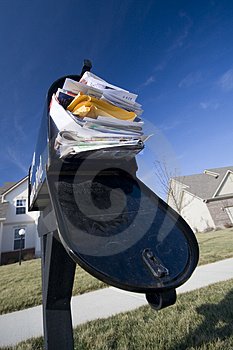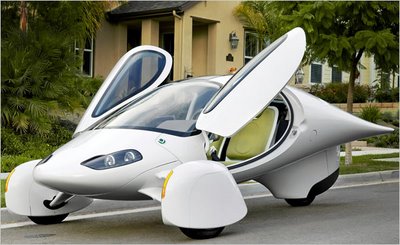Interviewing the Orchestra on the Titanic

Labels: Green Inc., New York Times, newspapers, Titanic
Sunday, April 26, 2009

Labels: Green Inc., New York Times, newspapers, Titanic
Friday, April 10, 2009
 Living on a limited budget as we do, we here at The Thin Green Line are sensitive to the fact that all too often, doing the right thing is not the cheapest thing.
Living on a limited budget as we do, we here at The Thin Green Line are sensitive to the fact that all too often, doing the right thing is not the cheapest thing.
 rse if you're devoted to photo-voltaic, The Thin Green Line has a morsel for you as well.
rse if you're devoted to photo-voltaic, The Thin Green Line has a morsel for you as well.Labels: 1BOG, New York Times, Pennsylvania DEP
Monday, April 6, 2009

Labels: Hummer, Jim Lynch, New York Times
Thursday, April 2, 2009

Labels: 41 Pounds, Forest Ethics, New York Times, Pitney Bowes, U.S. Postal Service
Saturday, March 21, 2009
 This here is one of them there good news/bad news/good news stories.
This here is one of them there good news/bad news/good news stories.
Labels: blue whale, Copper Beech Middle School, Gordon Lightfoot, National Oceanographic and Admopsheric Administration, New York Times, right whale
Thursday, February 19, 2009

Who says we at The Thin Green Line don't have a little grease under our fingernails?
Everyone? O.K., you're right. We can barely check our own tire pressure without help.
But that's OK. Living and writing in a car town and trying to convince car folks, who judge a vehicle by things like horsepower and torque, that they should also be worried about emissions is no easy task.
Not that we're complaining.....OK, maybe we are a little bit.
Anyway, in attempt to convince car folks that green can be cool, we present this link, to a slideshow on the New York Times web site, from which we have shamelessly and boldly copied the above photo. No, it's real and it's green baby. Go check it out.
But also, because we cannot completely deny our inner geek, we also present the below photo which, we confess, we think is cool too. It was dubbed "the itty bitty city car."
Labels: alternative autos, New York Times, slideshow
Wednesday, December 17, 2008
Labels: New York Times, Pottstown, recycling
Saturday, November 29, 2008

Labels: Barack Obama, Boston Globe, Christian Science Monitor, Natural Resources Defense Council, New York Times, Union of Conerned Scientists, wind power
Sunday, November 9, 2008

This weekend we will have "game night" at my house with two or three couples and their children.
When we bought our house, we fell in love with the beautiful hardwood floors so we haven't put down too many rugs.
So when the six or seven children go tearing throughout house, often yelling at the top of their lungs, the sound can be cacophonous.
And more than once, I have said aloud, "if only we could bottle that energy, we could solve the energy crisis.
Well damn if someone didn't go and do that -- sort of.
Leave it to the Dutch.
As this article in The New York Times shows, they did something ingenious. They figured out a way to harness all the energy from the stomping, gyrating and bouncing that goes on in a Euro-dance club and turn that mechanical energy back into electric energy.
Called, appropriately, "Clubb Watt," this Rotterdam club is partly party powered.
This from the Times article: At Watt, which describes itself as the first sustainable dance club, that electricity is used to power the light show in and around the floor. “For this first club, we thought it was useful for people to see the results,” said Michel Smit, an adviser on the project. “But if the next owner wants to use the electricity to power his toaster, it can do that just as well.”
Watt is in large part the creation of the Sustainable Dance Club, a quirky company formed last year by a group of Dutch ecological inventors, engineers and investors now headed by Mr. Smit.
More than a year in the making, Watt is a huge performance space with not just the sustainable dance floor, but also rainwater-fed toilets and low-waste bars. (Everything is recycled.) Its heat is harvested in part from the bands’ amplifiers and other musical equipment.
It's like a bizzare mixed clone of Danny Terrio and Ed Begley Jr.
Anyhoo, kudos to the Dutch for thinking outside the club. Maybe we really can innovate our way out of global warming.
Why do I suddenly hear The Bee Gees singing "You should be dancing yeah....?"
Labels: Clubb Watt, New York Times, sustainable dance club
Monday, October 6, 2008
Labels: Denver, Ex-urb, Germany, Lake Billy Chinook, LEED, Marburg, New York Times, suburb
Sunday, September 28, 2008
Labels: Berkeley, California, EPA, New York Times, OxyChem, Pottstown, solar power, The Mercury, U.S. Dept. of Energy, zoning
Thursday, September 4, 2008
Labels: Gustav, Hanna, hurricanes, New York Times
Tuesday, September 2, 2008
Labels: Barack Obama, Denmark, John McCain, New York Times, Sarah Palin, Thomas Friedman, U.N.
Tuesday, August 12, 2008
Labels: Binghamton, green colleges, Harvard, New York Times, Princeton Review, Yale
Saturday, August 2, 2008
Labels: CNN, Exxon Mobil, Germany, McClatchy, New York Times, solar energy, space, wind power
Monday, July 28, 2008
Labels: aquaculture, New York Times, sustainability, Wal-Mart, Washington Post, Wegman's, Whole Foods
Wednesday, July 9, 2008
Labels: algae, Chevron, embedded energy, Exxon, New York Times, oil, University of Minnesota
Tuesday, July 1, 2008
Labels: Blackberry Farm, honeymoon, New York Times, wedding
Sunday, June 29, 2008
Labels: Bud Lightcap, Elmsford, green buildings, historic preservation, New York Times
Tuesday, June 24, 2008
Labels: Home Depot, New York Times, NLR, Seventh Generation, Sun and Earth